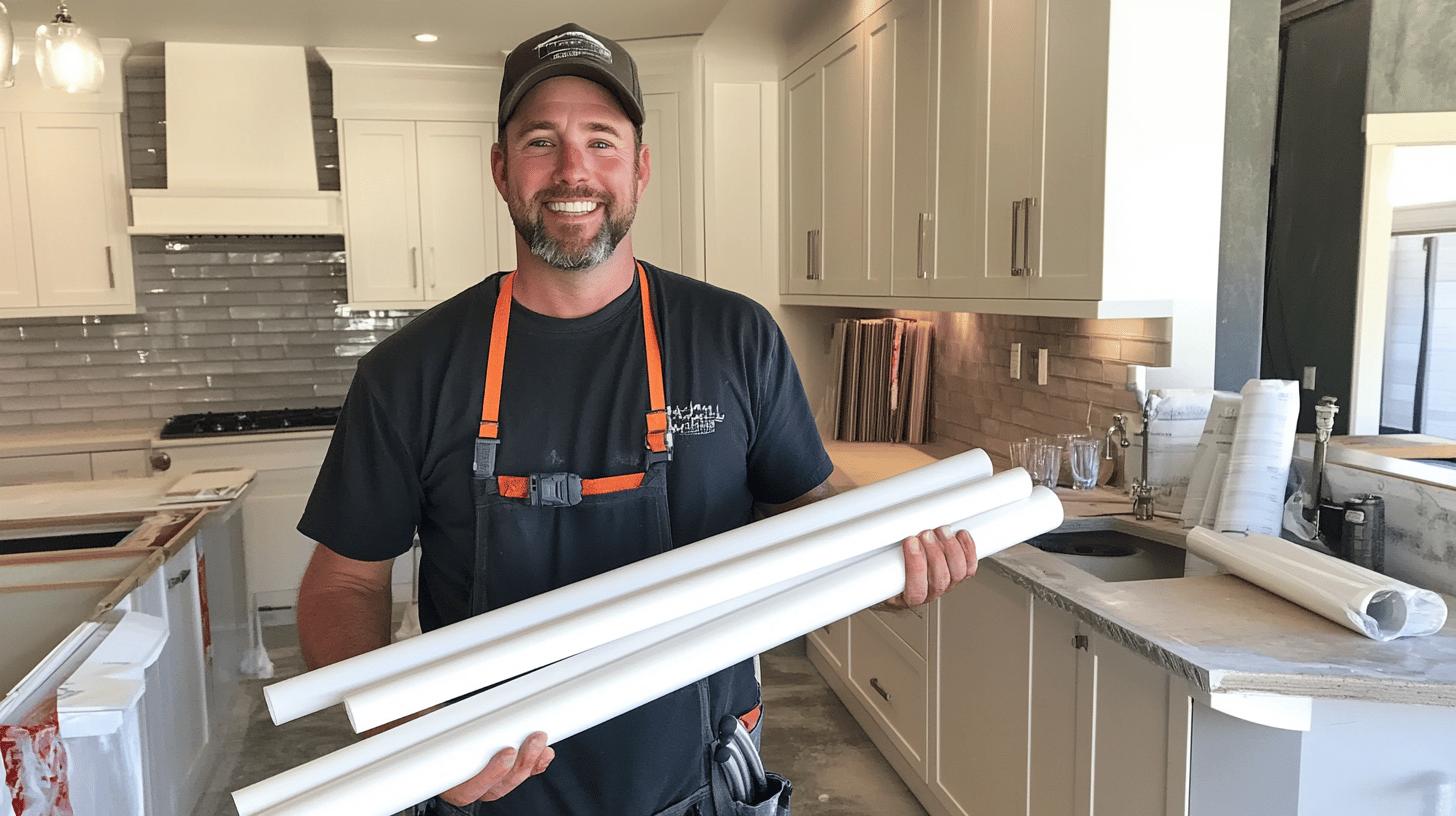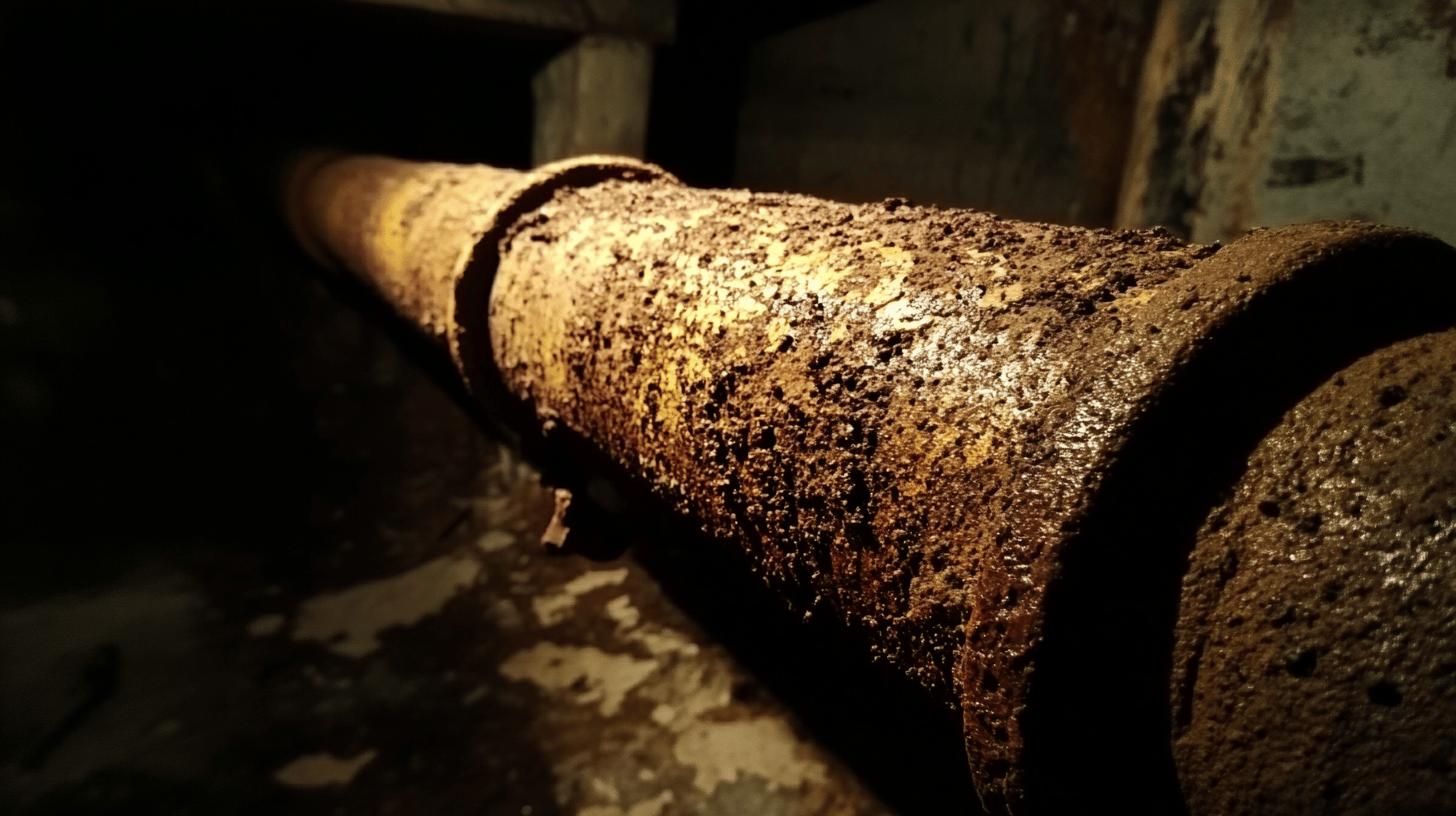TL;DR:
- Lifespan: Cast iron pipes last 40-50 years, up to 100 years in ideal conditions.
- Deterioration Signs: Slow drainage, frequent leaks, rust, discolored water, mold, sewage odors.
- Risks of Old Pipes: Structural damage, mold growth, poor water quality, health risks, plumbing failures.
- Modern Alternatives: PVC (cost-effective, corrosion-resistant) and PEX (flexible, withstands extreme temperatures).
- Inspection Methods: Visual checks, video camera inspections, hydrostatic pressure testing.
- Replacement Costs: Labor ($50-$200/hr), Material ($3-$15/ft), structural repairs, permits.
- Professional Help: Recommended for thorough assessments and repairs; look for licensed plumbers with strong reputations.
Are your old cast iron pipes hurting your home’s plumbing? These pipes have been around since the 17th century and are known for being tough, but they can still wear out. Usually, they last about 40 to 50 years, and sometimes even up to 100 years if they’re in good shape. But if you start seeing problems like rust or clogs, it might be time to think about replacing them. Knowing how long they last and the improvements in pipe-making could help keep your plumbing system strong for years to come.
Understanding the Lifespan of Cast Iron Pipes
Cast iron pipes have been used in plumbing since the 17th century because they’re strong and durable. Usually, they last around 40 to 50 years, but they can even last up to 100 years in the right conditions. They’ve been popular for their ability to handle pressure, which makes them great for sewers and drainage. However, problems like rust and clogs can make them wear out faster.
To maximize a cast iron pipe’s longevity, consider these factors:
- Environmental Factors: High moisture and acidic soil can speed up corrosion.
- Installation Quality: Poor installation may lead to early failure.
- Maintenance Practices: Regular checks can prolong the pipe’s life.
- Water Composition: Minerals can cause deposits and corrosion.
- Usage: Heavy usage can wear pipes faster.
Advancements in casting techniques have really boosted the durability of cast iron pipes. For instance, vertical casting introduced in the 19th century helped create pipes with consistent wall thickness, making them stronger. Still, despite these improvements, natural wear and environmental factors will eventually make it necessary to replace the pipes to prevent failures and keep your plumbing running smoothly.
Signs of Deterioration in Cast Iron Pipes

Noticing signs of wear in your cast iron pipes is really important for keeping your plumbing system in good shape. Common red flags include slow drainage and frequent leaks, which show that the pipes might be losing their strength. If you see rust or notice discolored water that looks brown or yellow, that’s another big warning sign. You should also pay attention to mold growth or sewage smells in your home, as these can indicate pipe problems.
These issues often come from corrosion, which is common in older cast iron pipes. Corrosion happens when the pipe material reacts with moisture and acidic soil, causing the pipes to weaken and develop cracks and leaks. Slow drainage and water discoloration usually mean there’s rust and mineral buildup blocking the flow of water and lowering its quality.
Catching these signs early can help you avoid serious damage. If you ignore them, you could end up with water damage or even structural issues in your home. Taking action quickly can lead to repairs or replacements that keep your plumbing system reliable and long-lasting.
Risks of Not Replacing Old Cast Iron Pipes
Are old cast iron pipes a risk for your home? Definitely. If you don’t replace them, you could face serious structural and health problems. As these pipes age, they become more prone to corrosion and leaks, which can lead to water damage and mold growth. These issues can weaken your home’s structure and create health risks, like respiratory problems from mold exposure.
Here are some risks of ignoring old cast iron pipes:
- Structural damage from leaks and corrosion
- Mold growth from constant moisture
- Poor water quality from rust and discoloration
- Increased chance of plumbing system failure
- Potential water pressure issues
- Health risks from mold and contaminated water
Replacing old cast iron pipes before issues get worse is crucial for protecting your home and preventing health risks. Experienced plumbers can assess your pipes and recommend the best solutions, keeping your plumbing safe and dependable. By swapping out those old pipes, you not only safeguard your home but also gain peace of mind, knowing your plumbing will hold up for years ahead.
Modern Alternatives to Cast Iron Pipes

Are there better plumbing options than cast iron? Definitely! PVC and PEX pipes are excellent modern alternatives. PVC (polyvinyl chloride) is a favorite because it doesn’t corrode like cast iron. Its smooth interior helps prevent clogs and is budget-friendly for homeowners looking to upgrade their plumbing. PEX (cross-linked polyethylene) is also a great choice; it’s flexible and can handle extreme temperatures, making it perfect for both hot and cold water lines.
| Material | Benefits |
|———-|———-|
| PVC | Corrosion-resistant, cost-effective, smooth interior prevents clogs |
| PEX | Flexible, versatile, withstands extreme temperatures |
| Cast Iron| Durable, robust, handles large water volumes |
Both PVC and PEX tackle the downsides of cast iron. While cast iron is strong and can handle a lot of water, it tends to corrode and is heavy, which can make installation tricky. On the other hand, PVC and PEX are lightweight, making them easier and cheaper to install. Plus, they resist corrosion, meaning you’ll spend less time and money on maintenance. Choosing these modern materials can really enhance your plumbing system’s efficiency and help you avoid costly repairs in the long run.
Assessing the Condition of Cast Iron Pipes
How do you check the condition of cast iron pipes? Start with a visual inspection. Look for rust, leaks, or any damage on the outside of the pipe. This first step can help you spot potential problems that need more attention. Also, listen for strange noises, like gurgling or clanging when water flows, as these can indicate internal issues.
For a deeper inspection, special tools like video cameras can get a close-up view inside the pipes. These camera inspections can reveal any buildup, corrosion, or cracks that you can’t see from the outside. Hydrostatic pressure testing checks if the pipes can handle pressure without leaking.
Why should you hire professionals for this? They have the skills and tools to find issues that you might miss during a DIY check. Pros can also interpret the inspection results accurately, giving you a complete understanding of your plumbing system’s health. This expertise helps you make smart decisions about repairs or replacements, keeping your home safe from plumbing failures.
The Cost of Replacing Cast Iron Pipes

How much does it cost to replace cast iron pipes? The price can change based on where you live, the length and diameter of the pipes, and any structural damage that needs fixing. In expensive areas, labor costs might be higher, which can raise the total bill. If your pipes have a complicated layout, that can also increase labor costs. Plus, if there’s any structural damage, those repairs will add to your expenses as well.
- Labor Costs: $50 to $200 per hour based on location and complexity
- Material Costs: Pipes may cost $3 to $15 per foot
- Structural Repairs: Extra if walls or floors need repair due to leaks
- Inspection Fees: Can add to initial costs
- Permit Fees: Required permits can increase expenses
Why should you hire a professional plumber? They make sure the job is done correctly and efficiently, which helps prevent future problems. Professionals give accurate assessments and deliver high-quality work. They provide clear estimates upfront, so you can budget properly and avoid any surprises. Their experience helps them tackle the complexities of replacements, ensuring your plumbing stays reliable and lasts a long time.
Professional vs. DIY: Cast Iron Pipe Replacement
Can you fix cast iron pipes on your own? While you might think you can handle minor leaks with repair kits like cast iron paste or plumber’s epoxy, these fixes have their limits. Corrosion and damage in cast iron pipes usually need more than just surface-level solutions. DIY methods might stop leaks for a bit, but they won’t fix deeper issues, leading to repeated repairs and more damage.
Why should you go with a professional plumber? They have the expertise and tools for thorough repairs. They can use video camera inspections to accurately assess the damage, ensuring that the fixes are complete and minimizing future risks. Plus, professionals often provide warranties on their work, giving you peace of mind and long-lasting reliability.
How do you choose the right professional? Look for licensed, experienced plumbers who have a strong reputation with cast iron systems. Asking friends for recommendations or checking reliable reviews can help you find the right fit. It’s also a good idea to get multiple quotes to compare services and prices, ensuring you get quality work at a fair price. Prioritizing professionals means you’ll receive high-quality service, helping your plumbing system last longer.
Final Words
Knowing how long cast iron pipes last and the problems they can face is key to figuring out when it’s time for a replacement. While these pipes are tough and can last for decades, they eventually start to show signs of wear, like rust and leaks. If you ignore these issues, you risk serious problems, including damage to your home and health hazards.
Looking into modern alternatives like PVC and PEX can provide better, more reliable options for your plumbing. Assessing whether cast iron pipes need to be replaced ensures that your plumbing system stays functional and safe. Choosing professional help for assessment and replacement guarantees quality work, keeping your home’s plumbing in top shape.
FAQ
Do cast iron pipes need to be replaced?
Cast iron pipes may need replacement if they show signs of deterioration, such as leaks, slow drainage, or water discoloration. Consider their age and condition to determine the necessity for replacement.
Does insurance cover cast iron pipes?
Insurance coverage for cast iron pipes varies by policy. Review your insurance policy to understand specific coverage details related to damage or replacement of cast iron pipes.
How much does it cost to replace cast iron pipes?
The cost to replace cast iron pipes depends on factors like location and pipe size. Generally, expenses include materials, labor, and potential structural repairs. Get estimates from professional plumbers for accurate pricing.
What is the lifespan of cast iron pipes?
Under optimal conditions, cast iron pipes tend to last 40 to 50 years but can endure up to 100 years. Age, usage, and environmental factors influence this lifespan.
When should I replace cast iron pipes?
Replacing cast iron pipes is advisable when they show deterioration signs, such as frequent leaks, rust, or sewage odors, which indicate significant corrosion or damage.
How do I know if my cast iron pipe needs replacing?
You can identify the need for replacement by observing slow drainage, rust, frequent leaks, or sewage odors. Professional inspections can confirm the pipe’s condition.
Is relining cast iron pipes worth it?
Relining can be a cost-effective solution for minor corrosion issues in cast iron pipes. It extends their life without complete replacement, reducing disruption and costs.
Are there modern alternatives to cast iron pipes?
PVC and PEX are popular modern alternatives. They resist corrosion and are easier to install compared to cast iron. PVC offers cost-effectiveness, while PEX provides flexibility for various applications.

